36 Midmarket Products We Love Right Now
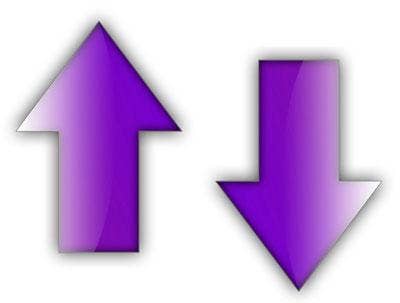
ChannelWeb uncovers 12 must-have technologies for midmarket customers and looks at channel-ready products in each technology area from some of the industry's key vendor players.
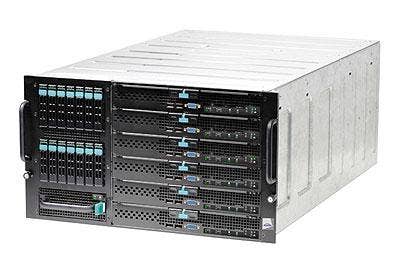
Intel took several years to produce its Modular Server before finally releasing it in January, but the chip giant's channel partners say this product was worth the wait. This "business in a box," featuring support for up to six server compute modules and 14 SAS 2.5-inch hard disk drives, is geared towards small to mid-sized customers on the growth fast track. The Intel Modular Server features two Ethernet Switch Modules, integrated SAN and a management module. It is built on the Intel 5000P series chipset and powered by multi-core Xeon processors. Pricing starts at approximately $7,000 and scales up to $32,000 for the full six-module rack.
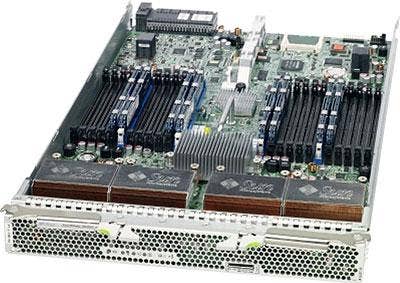
Sun Microsystems in mid-June released the latest, greatest blade in its considerable lineup, the Sun Blade X6450 Server Module. Capable of running Santa Clara, Calif.-based Sun's own Solaris 10 operating system as well as Linux, Windows and VMware, the X6450 is powered by four Intel Xeon 7300 series server processors, with options for dual-core or quad-core versions, and ships for entry-level pricing starting at $8,655. Improved energy efficiency and increased memory capacity are the key selling points of this Sun Blade x64 modular system, as well as the flexibility to migrate from 32-bit applications to 64-bit.
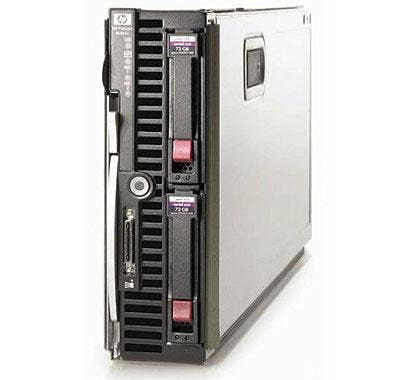
Hewlett-Packard's ProLiant BL465c G5 server blades built on Advanced Micro Devices quad-core processors are a mid-market price buster, with single blade configurations available for as low as $2,000 or so. These blades are powered by a choice of one or two Opteron 2300 series server chips, featuring AMD Dual Dynamic Power Management to optimize power draw and two mezzanine I/O expansion slots. ProLiant BL465c G5 blades support up to 64GB of ECC 667MHz DDR2 memory and feature the HP Smart Array E200i storage controller with 64MB read cache and optional battery-backed write cache. The AMD architecture's floating point advantages make these blades an attractive product for mid-market customers requiring server support for memory-intensive applications at a low price.
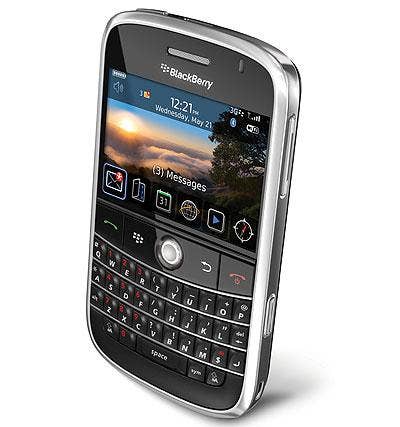
When it comes to mobile security in the mid-market, or mobile security as a whole, Research In Motion's BlackBerry sets the gold standard. Smart phones and BlackBerry solutions are used everywhere from the SMBs to a host of three-letter government agencies, so security is of the utmost importance. For security, BlackBerry relies on Triple DES and AES for encryption, RSA SecureID two-factor authentication and HTTPS secure data access, keeping data and applications from the prying eyes of any deviants.
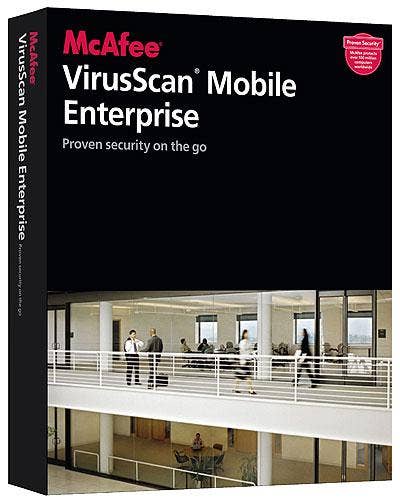
While the threat of mobile viruses and malware is still somewhat dormant -- for now, anyway -- several vendors are stepping up to protect mobile devices. One of them is McAfee with its VirusScan Mobile Enterprise Edition. Don't let the name fool you: companies of 5,000 or less can benefit greatly from the easy-to-deploy solution that defends against mobile viruses that can enter the network through e-mail, instant messaging, Bluetooth, Wi-Fi and Internet downloads to protect sensitive data and ensure that users are compliant on their devices. McAfee says it can detect malware in less than 200 milliseconds. When it finds a virus, it zaps it dead and prevents it from spreading.
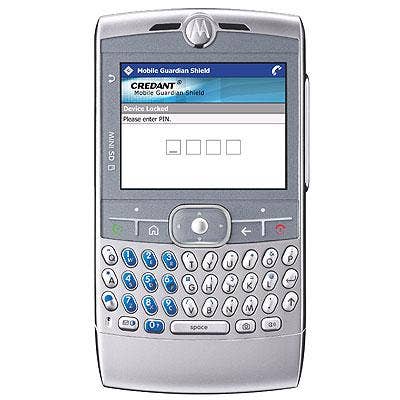
Don't want anyone spying on your sensitive data as it moves from one device to another? Credant's Mobile Guardian (CMG) encrypts mobile data to keep it out of the wrong hands. Credant's endpoint security and encryption tool is an integrated, centrally managed policy-based solution that can protect laptops, desktops, tablets, smart phones, PDAs and even iPods and USB storage devices. For midmarket companies, CMG can detect devices, authenticate users, control users and applications and encrypt data, all while auditing and reporting to ensure compliance is adhered to. All this is done from a central administrative console.
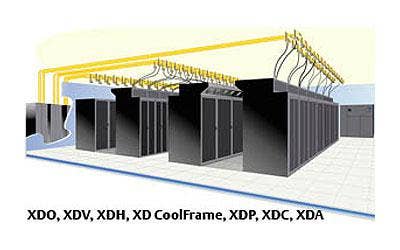
The Liebert XDV Vertical Top Cooling Module allows customers to getting the most out of their data center floor space while allows resellers to keep servers cool. Rather than hooking onto the rack, being installed under the floor, the XDV Cooling Module is hung from the ceiling where it can either draw heat from inside the cabinet or from the hot row then discharge cool air down the cool row, keeping data centers cool and efficient.
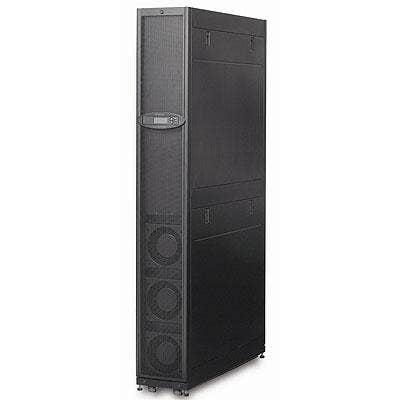
The APC InfraStrucXure InRow SC cooling unit lets resellers bring plug-and-play data center cooling to customers. There's no need to run refrigerant lines, provide remote heat exchanges or engage in costly mechanical services. The InRow SC unit can be set up directly next to a heat source in order to provide reliable and predictable cooling without using more energy to place fans next to server rows.
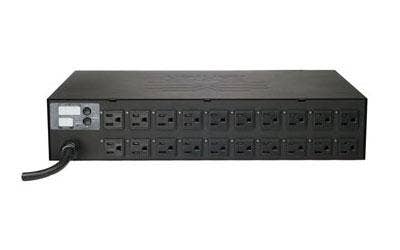
Lowering cooling costs isn't just about water cooling or hot and cold aisle set up. Power management also plays a role in running an efficient data center. Raritan's Dominion PX PDU allows resellers and customers to remotely turn power on and off, reboot, monitor and control power in a data center. Each Dominion PX PDU includes outlet-level power metering, secure IP access and user-configurable power sequencing.
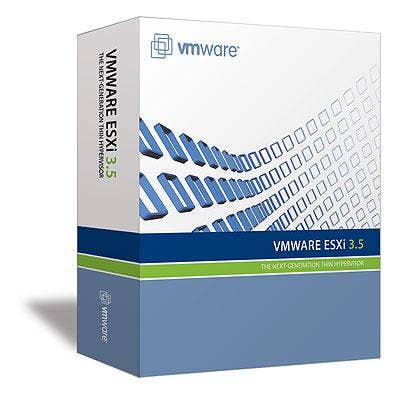
VMware, which commands over 85 percent of the server virtualization market, has at its core the ESX hypervisor-based server virtualization technology. ESX partitions physical servers into multiple virtual machines, each of which represents a complete system, with processors, memory, networking, storage, and BIOS. ESX works with VMware's Virtual Infrastructure 3 application to centrally control a virtualized infrastructure. VM3 is available starting at $3,624, which includes three VI3 licenses and one license for VirtualCenter Foundation. ESXi, a free version of VMware ESX, is available for download at no charge.
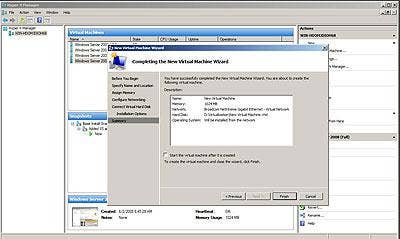
Microsoft's Hyper-V server virtualization software, based on the Xen open source hypervisor, is being offered as a feature of its Windows Server 2008 operating system, with a license to use the technology costing $28. Hyper-V consolidates multiple servers as separate virtual Windows, Linux, or other machines running on a single physical machine. Virtual servers created with Hyper-V along with physical servers can all be managed with Microsoft's System Center Virtual Machine Manager.
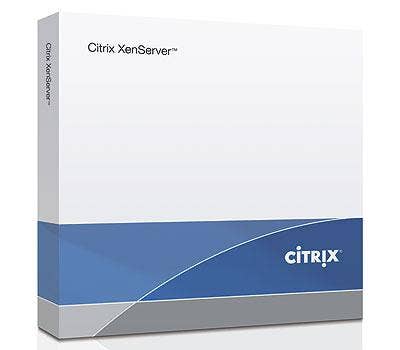
Citrix's XenServer server virtualization technology -- based on the Citrix Xen hypervisor -- is part of the company's overall virtualization platform, which also includes XenDesktop PC virtualization and XenApp application virtualization. It takes advantage of the Intel VT and AMD-V hardware virtualization assist capabilities to increase performance. The standard edition of XenServer lists for $780 for a perpetual license with an annual renewal price of $120, or $600 for an annual license. The enterprise edition is available for a perpetual license fee of $2,600 and annual renewal of $400.
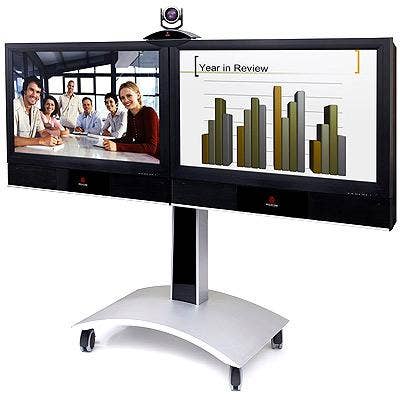
Designed for small, medium and large conference rooms, this solution delivers high-definition video and HD stereo audio. Systems are available as complete integrated offerings with integrated stereo speakers and single or dual displays in free-standing or wall-mount options. Polycom also makes NAT/Firewall traversal solutions and CMA Desktop, a new desktop video collaboration application embedded within a converged management application that makes it easier for IT administrators to deploy and manage video deployments on their network.

LifeSize Room supports dual displays, dual cameras and features a built-in high definition multipoint bridge, allowing up to six endpoints to participate in a call with no external equipment. H.239 data sharing lets you share documents, presentations and video. LifeSize products deliver a high definition experience at 1 MBps, allowing midmarket companies to deploy video without altering their current network or provisioning additional bandwidth.

Tandberg's Centric 1700 MXP delivers high-definition visual desktop communication between users around the world, from the desktop if necessary. The 1700 MXP features CD quality audio, integrated High-Definition camera, and 20-inch flat-screen monitor that can switch between PC content and brilliant, high-definition video, allowing for more interaction and collaboration.
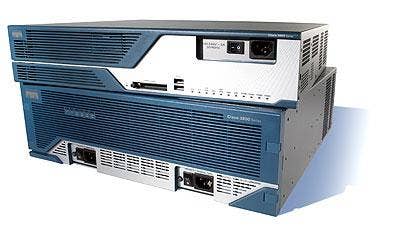
Cisco Systems offers its line of Integrated Services Routers, which at heart are data networking devices that pack in other features such as security and VoIP. The 3800 Series targets midsize and large businesses, as well as enterprise branch offices. By tapping into integrated Cisco CallManager functionality, customers can bring unified communications to users without all the extra boxes. Pricing for a hardware/software VoIP bundle that includes the Cisco 3845 ISR starts at $13,995. For customers looking for an entry-level system, a VoIP bundle based on Cisco's 2811 ISR is priced starting at $3,195.
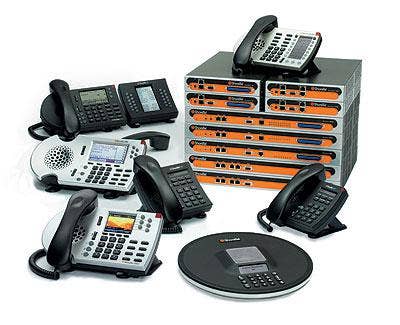
ShoreTel's ShoreGear Voice Switches, seen here with several of the vendor's IP phones, are one of the key building blocks of the vendor's unified communications offerings. The portfolio also includes ShoreTel's Call Manger, available in personal, professional, operator and mobile editions, which integrates video, voice, messaging and data via a single interface.
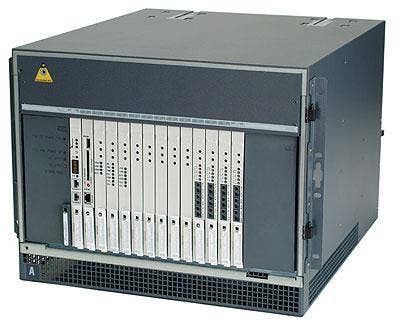
Avaya's S8400 Media Server provides the processing power to back its Communication Manager software for up to 900 stations. The Linux-based box was built with midsize enterprises in mind, offering support for up to five media gateways and multiple locations. It also supports software for voice messaging, fax messaging, auto attendant and other applications.
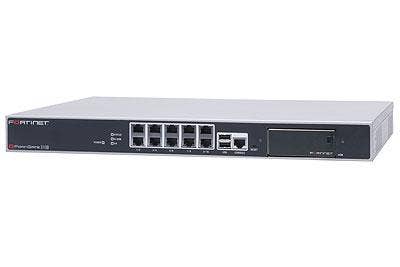
With increased firewall/VPN throughput and high port-density, the FortiGate-310B, a mid-tier UTM product, is specifically designed to provide mid-market businesses the same speed and performance as enterprise offerings, incorporating greater flexibility in network management functions and a higher degree of precision to hone in on threats. Additional benefits include highest-in-class port density of 10 gigabit Ethernet ports made available through and optional Advanced Mezzanine Card module. While previously reserved for high-end enterprise security products, these capabilities are now available to the mid-enterprise segment. The FortiGate-310B runs $6,995.
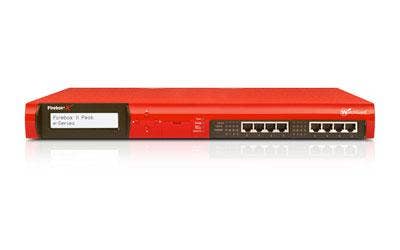
Firebox XPeak is the highest-performance line of Watchguard's unified threat management portfolio, offering out of the box zero day protection and up to two gigabit per second firewall throughput. By integrating powerful security capabilities with the sophisticated networking features of Fireware Pro, the Firebox X Peak delivers powerful security features and sophisticated networking capabilities for the most demanding network environments in the midmarket. Base price is $9,999 and the full bundle, including support is $14,999.
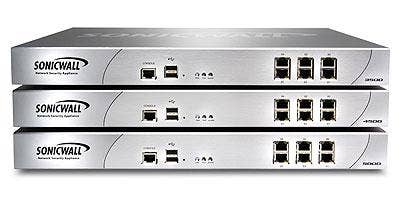
The SonicWALL Network Security Appliance Series (NSA) for the mid-enterprise applies next-generation Unified Threat Management against a comprehensive array of attacks by combining intrusion prevention, anti-virus and antispyware with the application-level control of SonicWALL Application Firewall. With advanced routing, high-availability and high-speed VPN technology, the NSA Series adds security, reliability, functionality and productivity to mid-tier networks, while providing affordable pricing and minimal complexity. The multi-core platform, which first appeared in the E-Class Appliances launched in 2007, allows IT administrators to better control, secure and authorize network access, which subsequently reduces security lapses and improves visibility of network activity and application use.
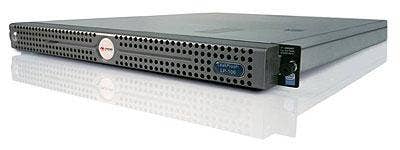
Trend Micro Leak Proof protects customer and employee privacy and intellectual property by monitoring and preventing information leaks at the point of use. The mid-market DLP solution prevents data leaks by combining endpoint-based policy enforcement with highly accurate fingerprinting and content matching technology. Two key components, the Anti-Leak Client software and the DataDNA Server appliance, work in tandem to protect sensitive information assets from data loss, data theft, and insider threats.
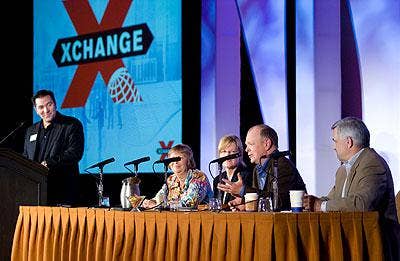
Tumbleweed's Secure Messenger is designed to make e-mail encryption simple and accessible for the middle market. The DLP product inspects all outbound e-mail at the network gateway, identifies e-mail content that is in violation of defined security policies, and automatically redirects suspect messages to a secure, encrypted channel for further action, such as deletion, quarantine, or encrypted delivery. This perimeter-based encryption strategy eliminates the need to install client software on the desktop, while ensuring that all users comply with privacy and security policies 100 percent of the time. Pricing starts at $11,000.
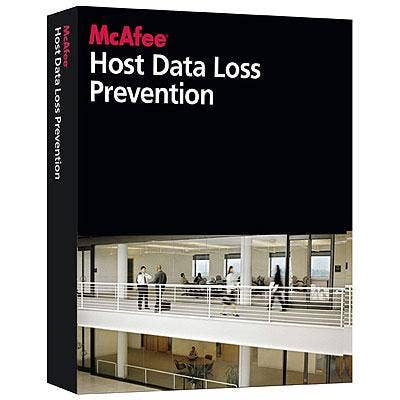
McAfee Host Data Loss Prevention monitors and prevents risky insider behavior that can lead to a sensitive data breach across networks, through applications and via removable storage devices. Features include internal transfer of data capabilities, centralized and comprehensive device management, multilayer protection and advanced auditing and reporting capabilities. Users will be able to restrict data transfer via any channel, prove adherence to regulatory compliance policies and streamline management via the ePolicy Orchestrator 4.0. Pricing is $12.80 per node for 251-500 users and $11.40 per node for 501 to 1,000 users.
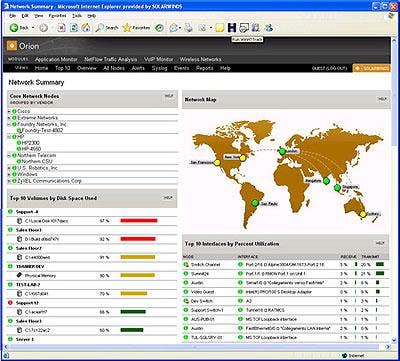
SolarWinds targets companies of all sizes with its Orion Network Performance Monitor, a web-enabled fault and performance management platform that offers visibility across the network. According to SolarWinds, NPM can help detect, diagnose and resolve network performance problems and outages. It monitors and analyzes real-time, in-depth network performance metrics for routers, switches, servers and other SNMP-enabled devices; provides and intuitive, customizable web interface that enables Top 10 views of the network; extends management capabilities to NetFlow traffic analysis and monitoring of VoIP performance, wireless devices, applications and servers; and enables advanced altering for correlated events, sustained conditions and complex combinations of device states.

NetScout's nGenius Performance Manager opens up visibility into performance indicators, applications traffic flows and packet-level details to help remedy and thwart degradations in network services. The Performance Manager can identify, diagnose, analyze and report on performance data for all network applications and infrastructures and enable drill down insight to enable network and application monitoring, troubleshooting, response time analysis and capacity planning. nGenius Performance Manger also offers up customizable live and historical views of the network along with reports to back them up to ensure the network is performing at optimum levels.
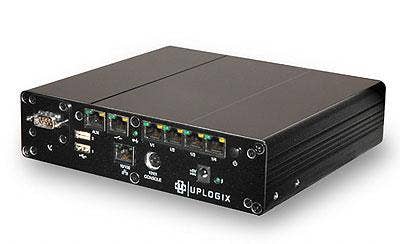
Uplogix offers remote management solutions to automate most routine maintenance and recovery tasks. The vendor vows to reduce management complexity with integrated remote management solutions to provide secure remote access and local, in-depth monitoring, as well as configuration, fault and service level management. The Uplogix 430 appliance runs Uplogix's Remote Management Operating System to monitor, manage and measure network services and offers connectivity to managed devices both in-band and out-of-band. It can monitor devices locally, perform maintenance or recovery tasks as need, all while enforcing security policies. Management control is possible by interfacing directly through the console port of the devices the 430 manages, offering always-on, localized, round-the-clock management. It can also automate as much as 70 percent of routine network maintenance functions.
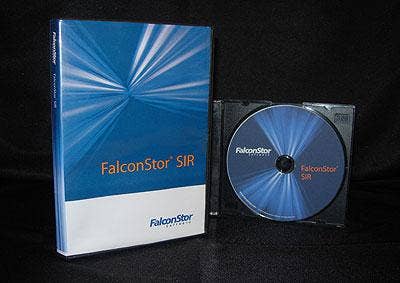
FalconStor's Single Instance Repository (SIR) software, when used with the vendor's virtual tape library products, eliminates duplicate data as backups are done to the virtual tape library without changing data protection policies, procedures, or software. It has a clustered architecture for performance scalability and high availability. The data is duplicated after it is sent to the VTL (post-processing) in order to minimize network bandwidth usage during the backup process. SIR is considered a feature of other FalconStor products, and is not separately priced. The lowest-cost FalconStor product featuring SIR is the company's Virtual Tape Library that is sold as a virtual appliance starting at about $2,000.
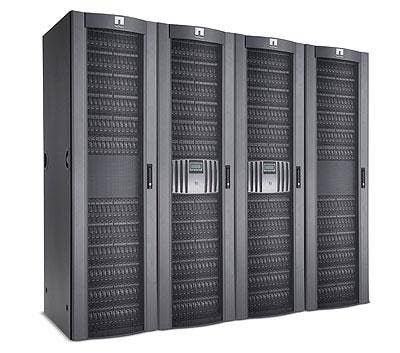
Deduplication is one of the components of NetApp's Data ONTAP storage operating system. The dedupe process can be scheduled to be done during off-peak times. It can be used for primary, backup, and archival data across many of NetApp's storage hardware platforms, including the FAS, pictured here. The dedupe technology can be installed quickly, and allows users or their solution providers to specify which datasets should be deduped. NetApp provides tools it says will help determine which datasets will benefit most from dedupe.
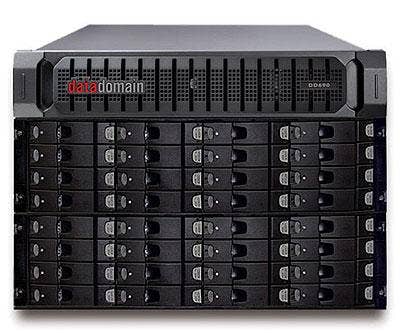
Data Domain was the vendor which started the deduplication market with its series of appliances. The DD690 is an in-line appliance which handles the dedupe of up to 48 Tbytes of raw data or up to 710 Tbytes of logical data. It can be configured with RAID 6 protection against the simultaneous failure of two hard drives. It supports global fan-in under which it can receive data from up to 60 multiple remote sites and eliminate duplicate data from those sites. Price for the DD690 starts at $210,000, or $160,000 for the gateway model with no integrated storage.
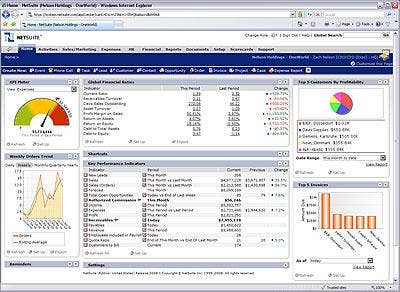
Launched in April, NetSuite OneWorld is designed for midmarket companies with multiple branches and business units. OneWorld plugs into NetSuite's entire line of accounting, ERP, CRM, and e-commerce modules, and consolidates financial information -- including disparate currencies, tax rules, and reporting terms -- into a single account. NetSuite OneWorld is priced at $1,999 per month in the U.S., and is an add-on to the NetSuite base offering, which is $499 per month and $99 per user per month.
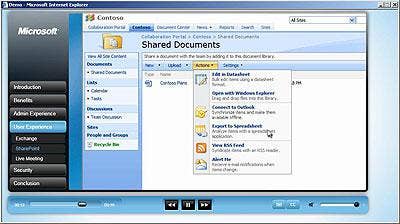
Microsoft's budding services portfolio includes Exchange, SharePoint, Office Communications Server, and Office LiveMeeting, and a SaaS version of System Center is reportedly in the works. Slated for launch sometime later this year, Exchange Online will be priced at $10 per user/month, SharePoint Online per user/month will be $7.25, Office Communications Server Online will be $2.50 per user/month, and LiveMeeting will be $4.50 per user/month. Microsoft will offer these services in one-year automatically renewing agreements.
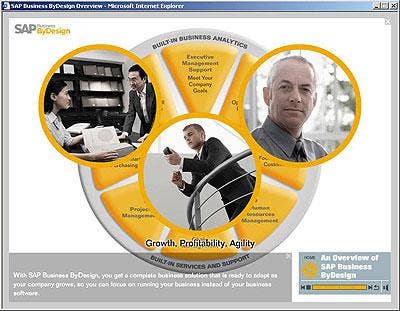
Aimed at midmarket customers with between 100 and 500 employees, Business ByDesign is an integrated set of on-demand applications including financial, human resource management, executive management support, project management, supply chain management, CRM, supplier relationship management, business analytics and compliance management software. Business ByDesign is priced at $149 per user per month for the complete application package with a minimum of 25 users.
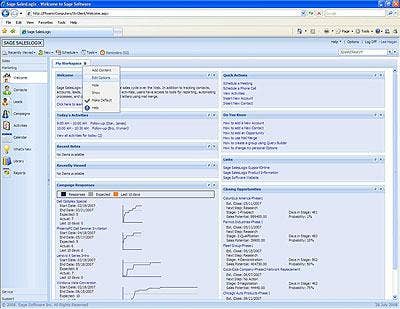
Targeting small-to-midsize businesses, the SalesLogix CRM application (with a screen shot of the welcome page shown here) is widely seen as the flagship product in Sage's CRM portfolio that includes Act! and SageCRM. SalesLogix offers sales automation, marketing, customer service and support, and dashboard and reporting capabilities. SalesLogix 7.5, with new mobile and business intelligence features, is scheduled to debut this fall. The software is priced at $795 per user.
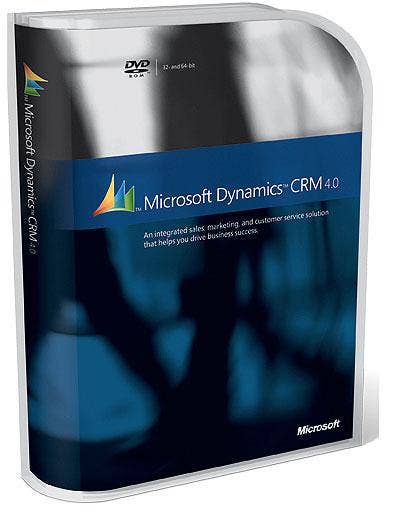
While Microsoft has offered a CRM product for some time, Microsoft watchers generally agree that this release of the software, which debuted last December, marks Microsoft's real entrance into the CRM application market. The application automates sales, marketing and customer services business processes and offers tools for sales collaboration, customer segmentation, and sales/marketing campaign planning and execution.
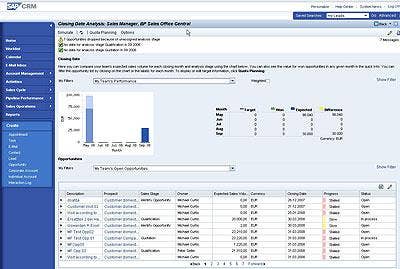
Specifically targeting midsize businesses (which SAP defines as having between 100 and 2,500 employees), Business All-in-One pre-configures ERP, CRM (including the CRM portal shown here), supply chain management and business analysis applications into a single package. The product also includes best-practice implementation blueprints and process methodologies for specific vertical markets. About 75 percent of Business All-in-One sales are made through channel partners. Pricing is based on configuration, number of users and other factors.